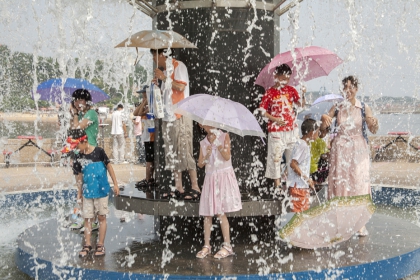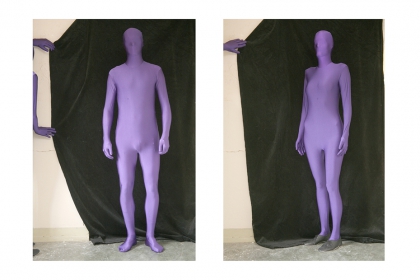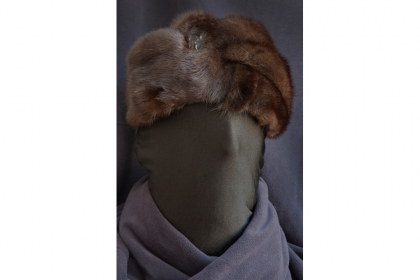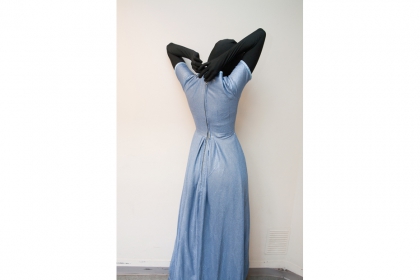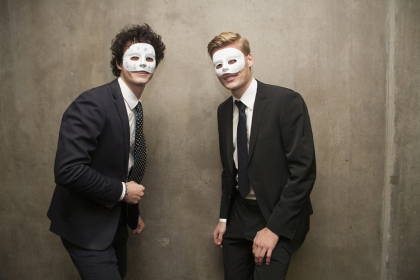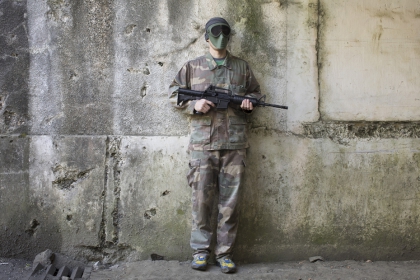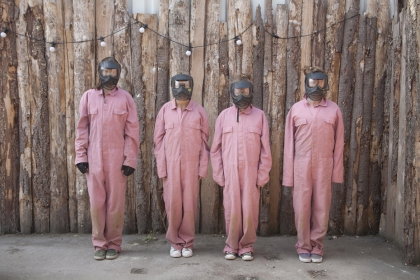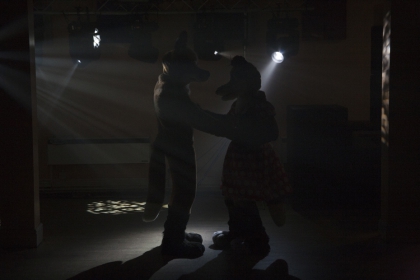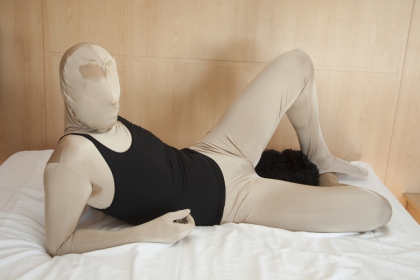Charlotte Lybeer (1981, Belgium) studied photography at the Academy of Fine Arts Ghent and postgraduated at the Higher Institute for Fine Arts (HISK) in Antwerp. Lybeer’s photography projects were widely exhibited nationally as well as abroad (Flemish Institute Osaka JP, De Kunsthal Rotterdam NL, Liefhertje en de Grote Witte Reus Den Haag NL, Three Shadows Photography Art Center Beijing CN, Flanders House New York USA,…) published in leading journals and magazines (Camera Austria, NRC handelsblad, De Volkskrant, Metropolis M, Capricious Magazine,…) and documented extensively through her website charlottelybeer.be.
In 2016 she received her PhD in visual arts (Lifestyle Supermarket) at the Academy of Fine Arts Antwerp, where she’s teaching photography.
Since 2003 Lybeer photographs the experience of today's living in a highly artificial world. Her early works focus on the staged and controlled environments of gated communities and theme parks. Recently she photographed people who define their identity through codes and masquerades, demonstrating membership of one group while distancing themselves from mainstream society.
Charlotte Lybeer photographs subcultures that are related to virtual three-dimensional worlds, where players construct online a second identity. The characteristic is that these trans-human identities also be adopted outside the virtual world. Those photographic projects visualizes how people respond to a changing world: a world that expand geographically but also increasingly imaginary. In those series she captures the isolation and stillness of her subjects, their escapist desire to become the character of a dream, shaped by film, virtual reality and games.
As a photographer Lybeer combines the curiosity of the journalist researching actual phenomena – symptoms of the global, capitalist crisis – the empathy of the detective infiltrating enclosed worlds, and the sensibility to capture the way fiction transforms reality.
EPIDERMIS II
The tension between the real world and the parallel world is intensified in these perplexing portraits of morphsuits. The design and theatricality of public space extends into the private realm. Self-design is a statement in the virtual arena that is the Internet. How do I present myself to the other’s gaze? Which lifestyle do I use to construe an imaginary identity? How can I become someone else? In their Zentai suits these morphers succeed in escaping from the obligatory, omnipresent perception, the pressure of being seen, all the time, everywhere. They are encapsulated and unrecognisable in a completely enclosed form, vanishing into a trans-human identity that suddenly infiltrates reality in the home or hotel room where Lybeer portrays them. (Inge Henneman)
A tight-fitting fabric, which is like a second skin and fully encloses you, seems both concealing (don’t see) and revealing (see me). The wearer’s identity is hidden and at the same time is really out there to be seen. It seems as if vanishing into anonymity gives the wearer access to the not-I, as if the mirror image is deferred. The physical characteristics that determine our individuality are concealed behind an anonymous fabric. At the same time, they give access to a subculture that is dominated by recognition and connection. Real flesh once again invades the virtual world of pixels. An escape into tight-fitting oppressiveness, a disappearance in conspicuousness. (Dirk de Wachter)
Here the dress-up parties are undressed. All that remains of the spectacular or excessive or outrageous masks of the previous series is a thin layer of Lycra that fully erases the wearer’s skin colour or face. We no longer see people. Only blank figures that generate the smallest possible amount of meaning, through a pose, or an accessory, or a detail of the composition. The photo may be distinctly artistic, like in “LightBlack” for example, which evokes the classic view of a woman’s back in painting. Or formal with a humorous twist, like the cuddly toy whose presence is only betrayed by the pink ears that protrude from the customs packaging. The “mystic” photos in the series are perhaps the most intriguing. They stand out because of a single surprising detail, from a formalistic perspective. A masked, female silhouette in white Lycra, wearing a blonde wig (“Jes”). Or a yellow plastic bag with a white Lycra suit in it, photographed from above, that instantly reminds you of the famous Shroud of Turin – an image in which so much of the meaning has been erased that it almost forces the observer to fantasize obsessively about what is actually being observed. (Thomas Crombez)
The Zentai aficionados pose in empty, white spaces with a parquet floor, a carpet, or tile flooring. Except for their wooden skirting boards, they are devoid of any other markers. Due to the starkness of the interiors, no information about the wearers of the suits can be disclosed from these settings - it could be anyone, anywhere. Moreover, many of the subjects have chosen a position in a corner of the room, striking an almost sculpture-like resemblance.
Lybeer is more interested in the borderline areas of reality and fabrication than in maintaining a strict polarization between the two. Yes, spectators may be mentally able to reduce the distance between what they perceive as being true or a fiction – they may even dissolve any demarcation between those notions altogether. Lybeer, however, strives for maintaining a border zone by adopting various visual strategies so that reality turns out less clearly delineated and becomes dissimulated. It is obvious that photography’s traditional claim to truthfulness makes the medium perfect for exploring those confines, which Lybeer has done masterly throughout her career.
Tom Nys, in: “APE#062: Charlotte Lybeer. Epidermis II”, Ghent 2016, s.p.

